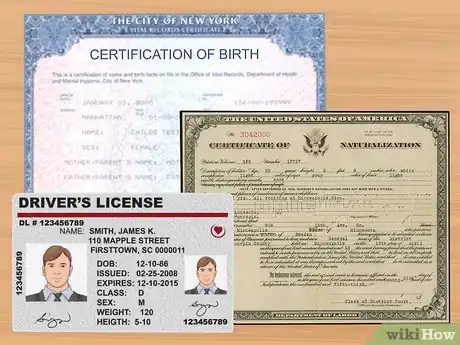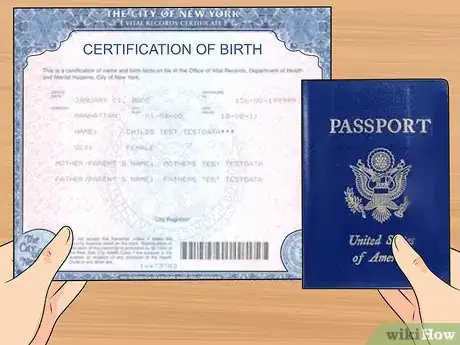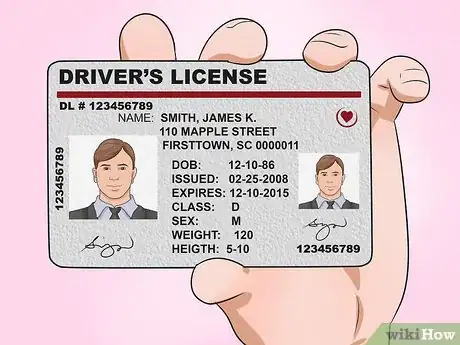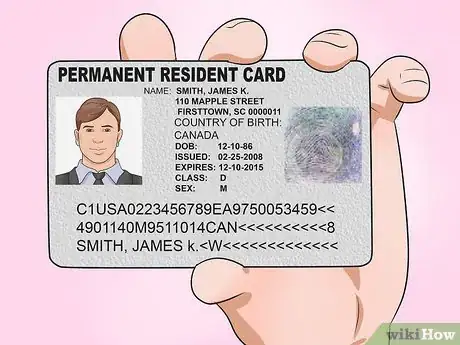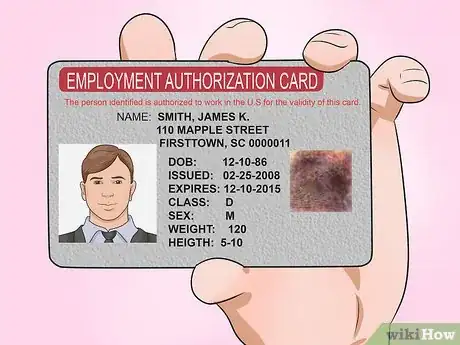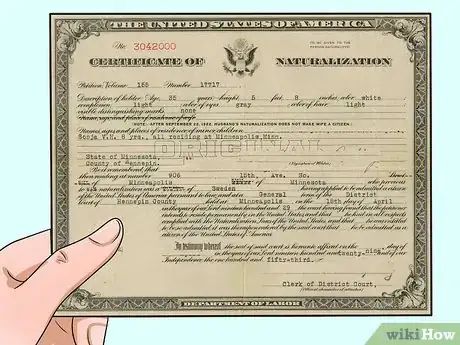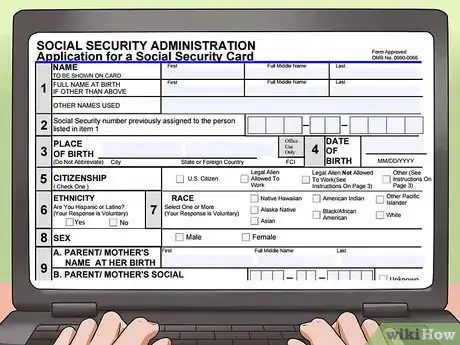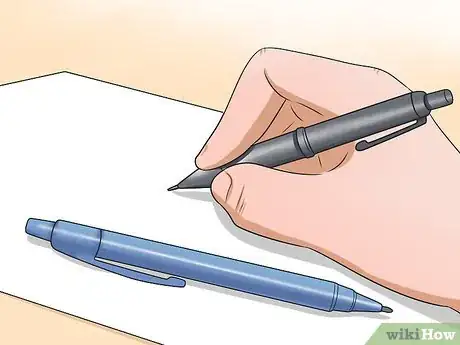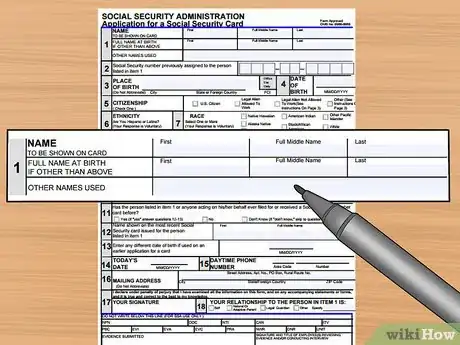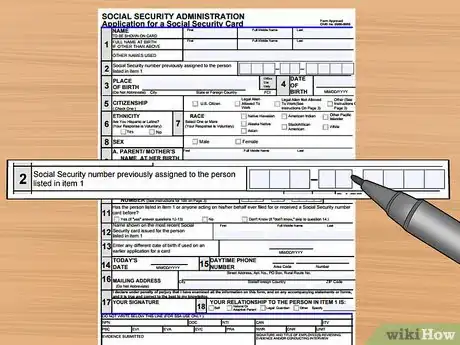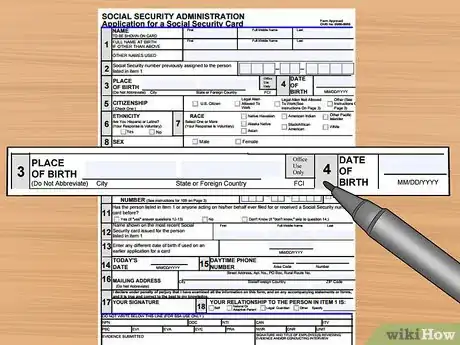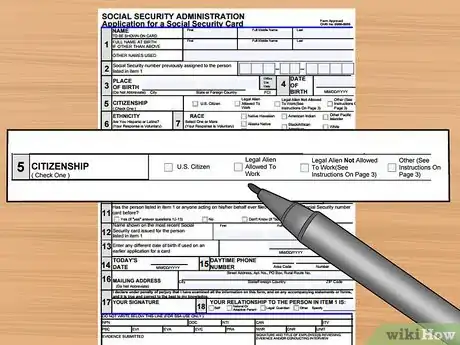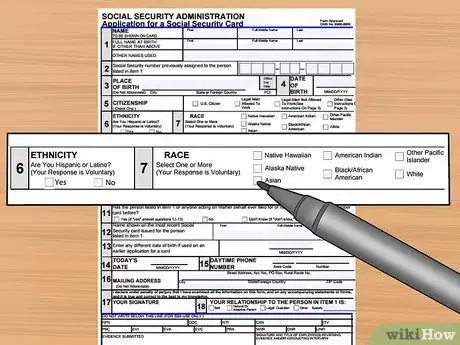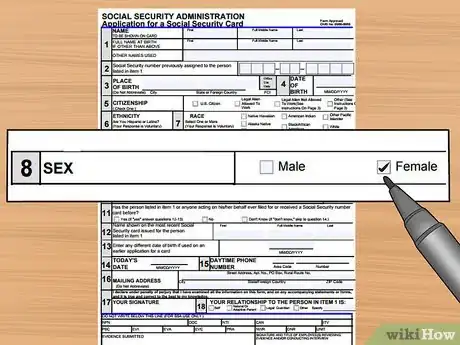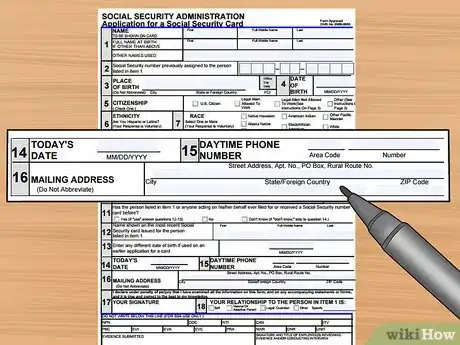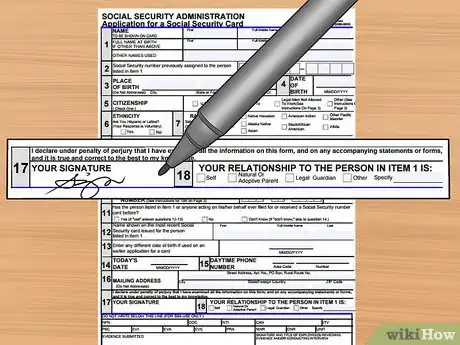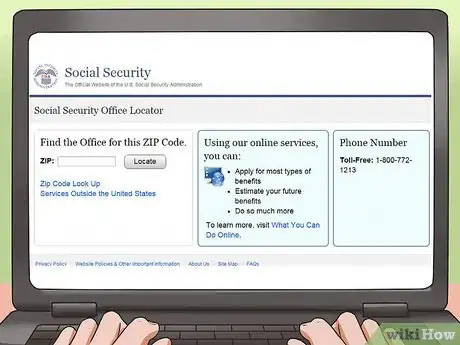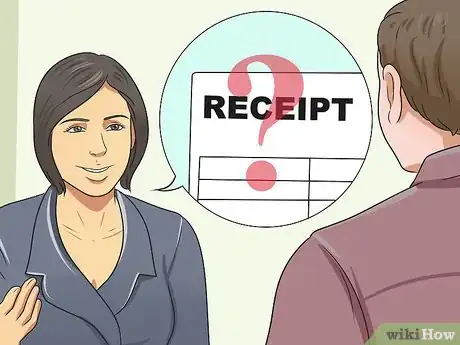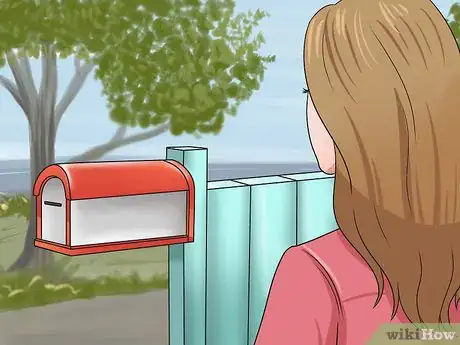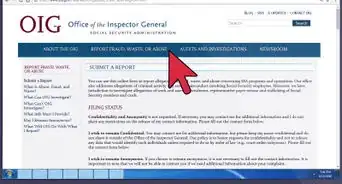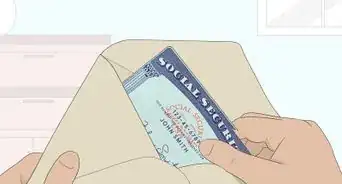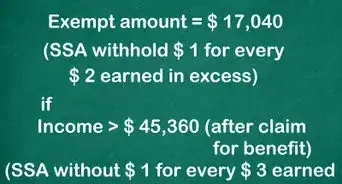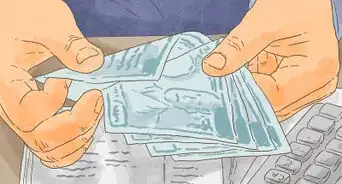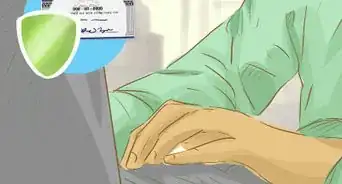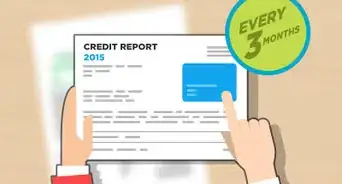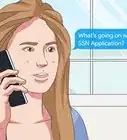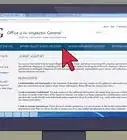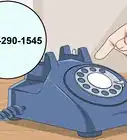X
This article was co-authored by Clinton M. Sandvick, JD, PhD. Clinton M. Sandvick worked as a civil litigator in California for over 7 years. He received his JD from the University of Wisconsin-Madison in 1998 and his PhD in American History from the University of Oregon in 2013.
This article has been viewed 42,347 times.
If your social security card has been lost, stolen, damaged, or destroyed, or if your legal name has changed, you are eligible to apply for a new card free of cost. You will need to submit a completed application as well as several documents proving your identity and social security eligibility.
Steps
Part 1
Part 1 of 3:
Gathering Necessary Documents
-
1Collect the proper documents. When applying for a replacement card as a U.S.-born adult, U.S.-born child, foreign-born adult United States citizen, foreign-born United States citizen child, you will need to prove your citizenship and identity. Noncitizen adults and noncitizen children have to prove their immigration status, work eligibility, and identity.[1]
-
2Locate your United States passport or original United States birth certificate. In order to prove U.S. citizenship when replacing or correcting a social security card, the following people must present their U.S. passport or birth certificate to the Social Security Administration (SSA):
- United States-born adult.
- United States-born child.
- Foreign-born U.S. citizen adult. If you do not have a U.S. passport, you can also present an original Certificate of Naturalization, Certificate of Citizenship, Certificate of Report of Birth (DS-1350), or a Consular Report of Birth Abroad.
- Foreign-born U.S. citizen child. If the child does not have a U.S. passport, you can also present an original Certification of Report of Birth, Consular Report of Birth Abroad, or Certificate of Citizenship.[2]
Advertisement -
3Prove your identity. In order to prove your identity when replacing or correcting a social security card, individuals must present the following to the SSA:
- United States-born adults, foreign-born U.S. citizen adults and U.S. citizen parents applying for their child’s card must present an original, unexpired document that shows their name, date of birth or age, and preferably contains a recent photograph. These documents may include a U.S. driver's license, state-issued non-driver identification card, or a U.S passport. If you do not have any of these documents and are unable to obtain a replacement within ten days, you provide an employee ID card, school ID card, health insurance card, or U.S. military ID card.
- United States-born children, and foreign-born U.S. citizen children must present an original document that shows the child’s name, date of birth, age or parents’ names, and preferably contains a recent photograph. These documents may include: a U.S. passport; child’s state issued non-drivers identification card; adoption decree; doctor, clinic, or hospital record; religious record, daycare center record; or school identification card.
- Non-U.S. citizens applying for their U.S. citizen child’s social security card must present their current DHS document, including a Permanent Resident Card, Arrival/Departure Record with an unexpired foreign passport, or a EAD, work permit from DHS.
- Non-U.S. citizen foreign workers, foreign students (F-1 or M-1), or exchange visitors (J-1 or J-2) must present a current DHS document, including a Permanent Resident Card, an Arrival/Departure Record with unexpired foreign passport/admission stamp in the unexpired foreign passport, or Employment Authorization Document from DHS.
- Non-U.S. citizen children must present an original Permanent Resident Card, Departure Record with unexpired foreign passport; or EAD/work permit from DHS. If the child does not have a DHS document, present an original document that shows the child’s name, date of birth, age or parents’ names, and preferably contains a recent photograph. Additionally, the SSA may accept: the child’s state issued non-drivers identification card; adoption decree; doctor, clinic, or hospital record; religious record, daycare center record; or school identification card.[3]
-
4Prove immigration status. In addition to proving identity, non-U.S. citizens must also present documents proving their immigration status. In order to prove your immigration status when replacing or correcting a social security card, present the following to the SSA:
- Noncitizen adults and children must present their current U.S. immigration document, including: a Lawful Permanent Resident Card, Machine Readable Immigrant Visa; Employment Authorization Document, EAD, work permit; Arrival/Departure Record/ admission stamp in your unexpired foreign passport.
- Foreign students (F-1 or M-1) must also present their Certificate of Eligibility for Nonimmigrant Student Status.
- Exchange visitors (J-1 or J-2) must present their Certificate of Eligibility for Exchange Visitor Status.[4]
-
5Prove work eligibility. In addition to proving identity, non-U.S. citizens also have to present documents proving their work eligibility. In order to prove your work eligibility when replacing or correcting a social security, present the following to the SSA:
- Foreign workers must present the adult or child’s Arrival/Departure Record or unexpired foreign passport with an admission stamp that shows a class of admission permitting work. Some foreign workers will be required to show their Employment Authorization Document, EAD, work permit from DHS.
- F-1 students must provide a letter from the applicable school that identifies the adult or child, confirms the adult or child’s current school status and also identifies the adult or child’s employer and the type of work that will be performed. In addition, the Social Security Administration may require evidence of the adult or child’s employment, such as: a recent paystub; or a signed and dated letter from the supervisor that sets forth the job; the employment start date; the numbers of hours the adult or child will work; and the supervisor’s name and contact information. In addition, if applicable, the adult or child may be asked to present a Form I-20 with the employment page completed and signed by the designated school official, and/or a work permit from DHS.
- J-1 students must provide an original and signed letter from the adult or child’s sponsor on the sponsor’s letterhead authorizing the employment.
- If an adult or child does not have permission to work but does have a current social security number, the adult or child must provide an original letter, on letterhead from the government agency that originally required the person to obtain the social security number for its services. The letter must: specifically identify the adult or child as the applicant; cite the law requiring the Social Security number; indicate that the adult or child meets all of the agency's requirements, except having the number; and contain an agency contact name and telephone number.[5]
-
6Offer proof and reason for a name change. When applying for a corrected card due to a name change, you must present SSA with the following proof of a name change including:
- Marriage document.
- Certificate of Naturalization showing the new name.
- Court order approving the name change.
- Divorce decrees.
- Children may also present: a final adoption decree with the new name; court order approving the name change; or an amended birth certificate with the new name.
- If an adult or child does not have these documents, they may present an identity document in your former name that has expired.[6]
Advertisement
Part 2
Part 2 of 3:
Completing the Application
-
1Get the application. You can find an application online or at your local Social Security Office.
- Download the application online at: http://www.ssa.gov/online/ss-5.pdf
- Print the application on standard white letter-size paper or A4 paper.[7]
-
2Write in blue or black ink. You must clearly print your responses to each section of the application in blue or black ink. Pencil and other ink colors will not be accepted.[8]
-
3Fill out the name section. Provide your full first name, full middle name, and full last name.
- If the name to be shown on your new card is different from the name that you were given at birth, you must include both. Also indicate any other names used in between the two periods.[9]
-
4Include your social security number. Clearly print the social security number previously issued to the person named on the form.[10]
-
5Provide your place of birth and date of birth. Provide the city and state or city and foreign country for the place of birth.
- Do not abbreviate the place of birth.
- For the date of birth, fill the form out in month, day, year format, using numerical values rather than written values.[11]
-
6State your citizenship status. Indicate if you are a U.S. Citizen, Legal Alien Allowed to Work, Legal Alien Not Allowed to Work, or Other.
- If you are not allowed to work, note that you need to attach a government document explaining why you still meet the requirements for having a social security number.[12]
-
7Voluntarily supply your ethnicity and race. This information is only requested for statistical purposes and is not mandatory.
- For ethnicity, you will mark whether or not you are Hispanic or Latino.
- For race, you can mark Native Hawaiian, American Indian, Alaska Native, Asian, Black/African American, White, or Other Pacific Islander.[13]
-
8Mark your sex. Check either the "male" or "female" box.[14]
-
9Provide your parents' information. You must provide your parents’ full names and social security numbers.
- If a social security number is unknown, check the "unknown" box.[15]
-
10Answer the remaining questions on the form. The first of the remaining questions will ask if the person for whom the card will be issued has ever received a social security number in the past. Since this is a replacement or corrected card, your answer should be "yes," and you will need to answer the other two questions on the form.
- You will need to list the name shown on the most recently issued card for the person in question.
- You will also need to write any different date of birth used on an earlier application.[16]
-
11Write down your contact information. You must provide a daytime phone number and a current mailing address.
- Provide the mailing address where you want the new card sent.[17]
-
12Sign and date the application. Write the current date and sign your full name, where indicated.
- You will also need to note your relationship to the person who the application is for. This relationship can be "self," "natural or adoptive parent," "legal guardian," or "other."[18]
Advertisement
Part 3
Part 3 of 3:
Submitting the Application
-
1Locate your local Social Security Card office. Do not mail the application to the Social Security Administration headquarters. You must locate the local Social Security Office responsible for serving your geographic area. You can find your local office at: https://secure.ssa.gov/apps6z/FOLO/fo001.jsp.
-
2Submit your application and documents by mail or in person. Gather your completed application and all other necessary documents. Take them directly into the local Social Security Office or mail them to that office's mailing address.
- Note that the cards are not printed onsite, therefore you will not receive your cards at the time you submit your application.
- Your documents will be returned to you if you submit the application by mail.[19]
-
3Ask for a receipt, if needed. If you need immediate proof that you applied for a new card, you can ask the official at your local Social Security Office for a receipt to confirm the submission of your application.
- Note that this must be done at the time of your submission and not beforehand or at a later date.
-
4Wait for your new card to arrive. After receiving your completed application and all necessary supporting documentation, your application will be processed and a new social security card will be printed at a secured location. This card will be sent to you via the U.S. postal service.
- This usually takes 7 to 14 business days.[20]
Advertisement
References
- ↑ https://www.socialsecurity.gov/ssnumber/ss5doc.htm
- ↑ https://www.socialsecurity.gov/ssnumber/ss5doc.htm
- ↑ https://www.socialsecurity.gov/ssnumber/ss5doc.htm
- ↑ https://www.socialsecurity.gov/ssnumber/ss5doc.htm
- ↑ https://www.socialsecurity.gov/ssnumber/ss5doc.htm
- ↑ https://www.socialsecurity.gov/ssnumber/ss5doc.htm
- ↑ https://www.socialsecurity.gov/ssnumber/ss5doc.htm
- ↑ https://www.socialsecurity.gov/ssnumber/ss5doc.htm
- ↑ https://www.socialsecurity.gov/ssnumber/ss5doc.htm
- ↑ https://www.socialsecurity.gov/ssnumber/ss5doc.htm
- ↑ https://www.socialsecurity.gov/ssnumber/ss5doc.htm
- ↑ https://www.socialsecurity.gov/ssnumber/ss5doc.htm
- ↑ https://www.socialsecurity.gov/ssnumber/ss5doc.htm
- ↑ https://www.socialsecurity.gov/ssnumber/ss5doc.htm
- ↑ https://www.socialsecurity.gov/ssnumber/ss5doc.htm
- ↑ https://www.socialsecurity.gov/ssnumber/ss5doc.htm
- ↑ https://www.socialsecurity.gov/ssnumber/ss5doc.htm
- ↑ https://www.socialsecurity.gov/ssnumber/ss5doc.htm
- ↑ https://www.socialsecurity.gov/ssnumber/ss5doc.htm
- ↑ https://www.socialsecurity.gov/forms/ss-5.pdf
About This Article
Advertisement
